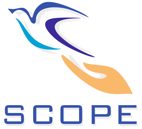About the course
An important concept in electronics is the system design using printed circuit board (PCB). In this course Basic concepts such as terminology, design process and assembly methods of PCB will be discussed. Points like multiple layer of PCB, designing for varied applications such as high frequency, low power, power electronics etc. will be covered.
In depth discussion on minimum system design, EDA design tools, schematic design, significance of various libraries and footprints. Demonstration will be using “Eagle” software. New component/library design and gerber file creation will be taught.
Soldering is a technique in which two or more metal items are joined together by melting and flowing a filler metal (solder) into the joint, the filler metal having a lower melting point than the adjoining metal. Soldering differs from welding in that soldering does not involve melting the work pieces. As a part of the course hands on session will be conducted on “soldering” and “de-soldering” techniques for mounting various electronic components which includes Surface Mounted Devices (SMD).
Pre-requisites:
No
Course Outcomes:
- able to design circuit diagrams and multilayer PCBs
- able to design New components and Libraries
- able to solder and de-solder various types of electronic components
Course Material:
Course Videos:
- PCB Design Rules:
https://www.youtube.com/watch?v=yx2l1EFZp-c - PCB Design using Cadsoft Eagle:
https://www.youtube.com/watch?v=MRZI6FVzZRc - Soldering Practice
https://www.youtube.com/watch?v=RV1WSIdLJyY
Course Instructors:
Dr. Y S Rao
Prof. G T Haldankar
